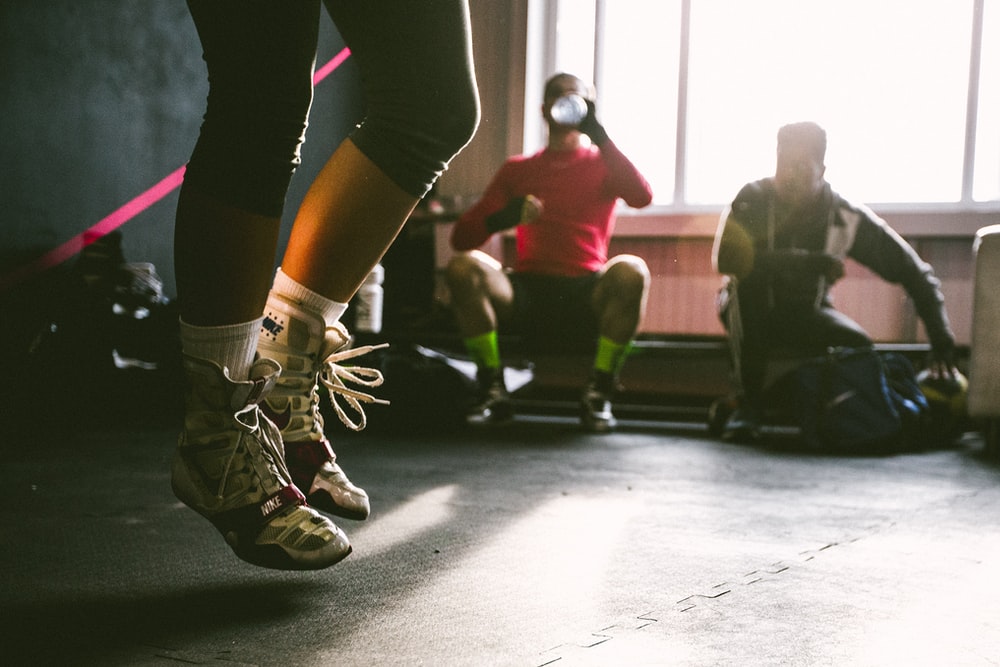If you have had any interest in the world of dance, chances are that you have heard something about fitness dance or dance fitness. So what is dance fitness?
The fitness dance curriculum is known for synthesizing cathartic movement and the corresponding mental health benefits with the improvement of physical health that all exercise provides Physically, it typically involves a cardio workout geared towards increasing flexibility, stamina, and overall physical fitness through dancing.
The moves you’ll see in a fitness dance class are often borrowed from many other dance styles, especially social, African and Latin dance forms. Other dance fitness classes borrow from ballet, like barre, or function as a regular dance class, teaching a specific style, with a focus on the fitness and exercise aspect of the choreography. Taking a dance class with the intention of getting more fit is also considered “dance fitness,” so it’s really what you make it out to be.
Who is it For?
To answer the question simply, fitness dance is for everyone. Because it operates on a broad spectrum of styles and skill sets, with goals ranging from increased mobility and improved mood to cardio training, world class physique building, and conditioning, there really isn’t a group of people who wouldn’t be able to find a style of fitness dance that is appropriate for them. And, since fitness dance is based on improving the body through rhythmic and repeated (and oftentimes simple) movements or exercises, it can appeal to a large crowd. From beginners just dipping their toes into dance or exercise, to more advanced students who can stand en pointe with the best of them, fitness dance has something for everyone.
Styles, Vibes, and Programs
You may have heard of dance-incorporating, trademarked fitness phenomena like Tae Bo and Jazzercise, but beyond those popular fads there’s an entire world of other fitness dance classes out there. Zumba classes are popular world-wide as they are high energy and involve a lot of repeatable dance moves, which can be challenging (in a fun way) to learn, but are easy to repeat and “master.” Zumba is geared towards those looking for a cardio workout, as you’re encouraged to never stop moving the entire time in class!
On the other side of fitness, you can focus more on strength training and quality of movement. One of the most enduringly popular and broadly useful options out there for this is a barre class. Inspired by the use of the barre in ballet training, this group of exercises can be performed at home with nothing more than a small mat, some small free weights, and a chair with a sturdy back. Combining elements of calisthenics, Pilates, yoga, free stretching, and of course, ballet, barre workout classes are an excellent low-impact way to tone up and improve flexibility while learning about some of the warm-up fundamentals of dance.

Which Class is Right For Me?
Here is where you have to ask yourself your goals, realistically assess your level of ability and fitness, and figure out which disciplines of dance appeal to you the most. If your goal is to achieve a dancer physique without being a dancer, for example, the classes inspired by ballet or jazz might be best, but you might also consider belly dancing for toned abs!
If you don’t have any specific goals but enjoy a certain genre of dance (say for instance hip-hop dance), then you might even consider taking a regular hip-hop dance class that is appropriate for your skill level. You can easily treat the class like a fitness class by focusing on doing the movements full out more than the choreography. Most beginning dance courses can be used as a form of fitness dance just by learning a range of motions and practicing them as a group of exercises set to music. Hip hop is a popular choice for fitness dance, but anything from tap to musical theatre will have you working new muscles or moving and sweating in no time. Check out our different beginners courses, like tWitch’s hip hop grooves course, in our First Steps program here.
There’s also fitness routines geared towards dancers, which may be toeing the line into plain old fitness classes, but they can be a great way to cross train and expan what you’re learning in your dance classes. There are many instructors that teach Pilates or conditioning classes for dancers, and the exercises in these classes may be the exact same ones that dancers will do in their own classes. If you’re interested in this type of class, check out our videos on Sugarfoot Therapy, a conditioning program made for dancers with functional movement and biomechanics in mind (fancy speak for moving in healthy ways!)
You can also create your own dance fitness routine! After taking a dance class, look for ways in which you can adapt the forms and motions you learned and apply that to a workout routine or exercises that you already know. Applying the rhythmic hits in jazz funk, or the full body flow found in contemporary classes to your regular workout movements may feel foreign at first, but it can be a great way to work some new muscle groups, create new coordination within your body, and just have more fun as you workout.
It may sound cliché, but fitness dance is really what you make of it, no matter how you choose to pursue your personal goals.

